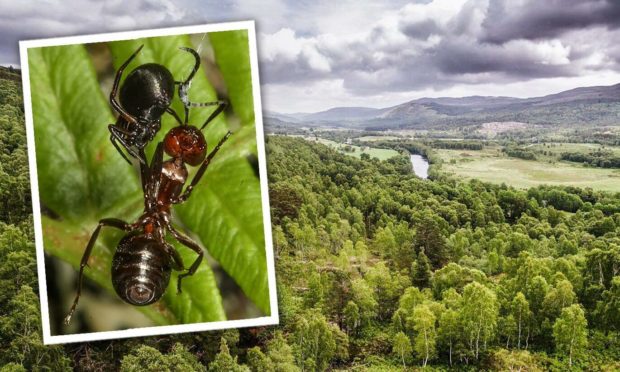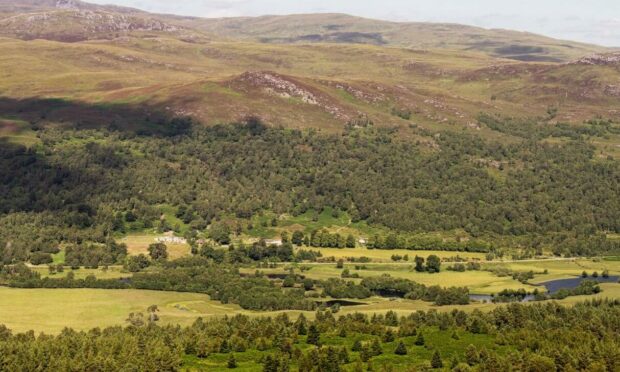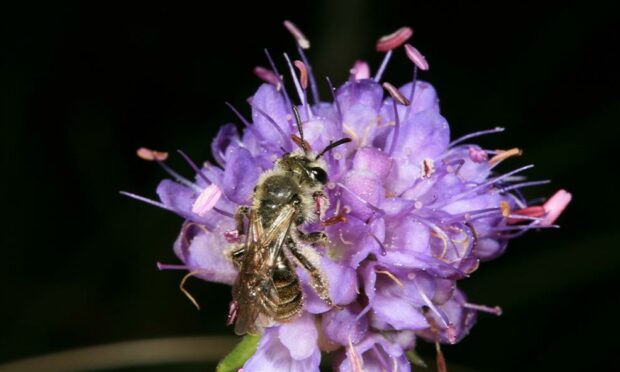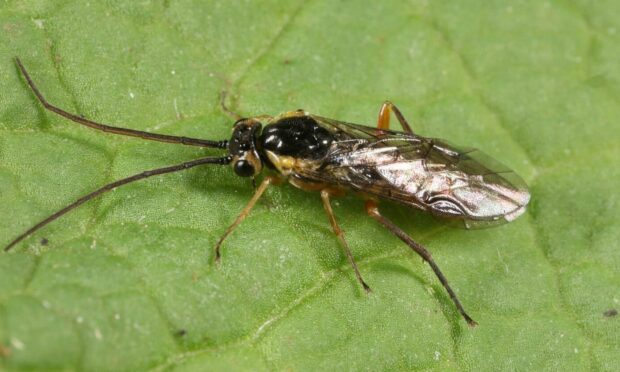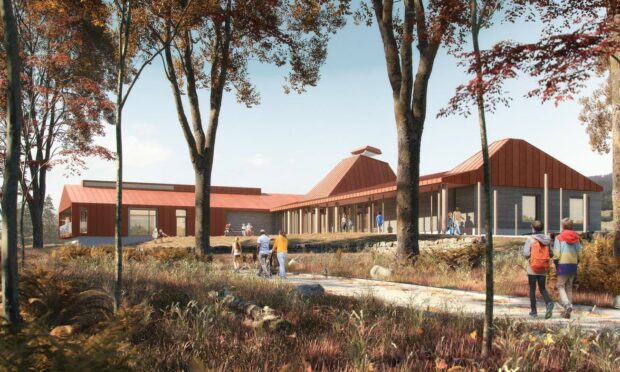A recently-discovered resident on the Dundreggan Estate is good news for biodiversity and efforts to save the ancient Caledonian forest.
Maybe less so for wood ants.
The rare ‘silky gallows spider’ has been confirmed to exist on the Trees for Life estate near Loch Ness.
It is one of only a few places in Scotland to find the species which is restricted to areas of Caledonian pine forests.
Efforts are now being made to increase its habitat as part of rewilding plans at the estate.
Spider highlights woodland quality
The tiny arachnid, measuring only about 1cm long, punches above its weight, eating ants twice its size.
It entangles its prey in a little web then bites them at the base of their antennae to inject a toxin which immobilises them.
The spider hangs the ants on a thread of silk awaiting consumption, giving the species its common name.
Doug Gilbert, Dundreggan’s conservation manager, believes the spider’s presence is important for the estate and wider conservation issues.
He said: “It tells us that the woodland at Dundreggan is an ancient woodland of a quality that encourages these species.
“Because of the biodiversity crisis we’re in, and the impact of climate change, we need all the biodiversity we can get.
“Discoveries like this helps to identify the good places we need to protect.
“Our fragment of pinewood at Dundreggan is not that big.
“But it shows that even a few pine trees in an old forest can be really important and we need to protect and expand that habitat.”
So far just two silky gallows spiders have been found at Dundreggan.
Ants on the move to create new colonies
But there are hopes that planting new native trees to expand the woodland will help increase numbers.
However, there first have to be wood ants to feed on.
A project, in partnership with the James Hutton Institute, is looking at transferring ants, including queens, to create new colonies.
“A lot of newly-planted woods won’t have ants in them for decades as they are quite slow to disperse,” said Doug.
“The spiders can only follow the ants.
“So we are looking at the potential to translocate wood ants into newly-planted, or relatively newly- planted, areas of Scots pine where the habitat is right to accelerate things.”
Rebecca Lewis, conservation officer with Buglife, carries out surveys at Dundreggan.
She added: “The main issue for invertebrates is data deficiency.
“They are a crucial part of our ecology yet there is so much we still need to know.
“Distribution varies between the ones I surveyed for.
“But it’s important to keep in mind that local disappearance can signal a failure in the system to support.
“When this happens it can signal a decline in habitat quality, which can be brought on by a number of factors.
Surveys helps conservations efforts
“This decline may also result in the loss or decline of other species as well.
“Of course, equally, local occurrence can signal that we are doing well and the habitat quality remains intact enough to support the species.
“Surveys like these help us build a picture allowing us to focus our conservation efforts.”
The silky gallows spider is one of a number of rare species discovered at Dundreggan.
Previous finds at Dundreggan have added to the estate’s reputation as a biodiversity-rich ‘lost world’.
They include several never recorded in the UK before or once feared extinct in Scotland.
Among them are a rare money spider, a non-biting midge, three sawflies, a mining bee, dragonfly, golden horsefly, a waxfly, three fungus gnats, and a mite.
Conservation charity Trees for Life is protecting and expanding fragments of the ancient Caledonian Forest on the estate.
It has already seen the regeneration of some trees species such as birch, juniper, cherry alder and rowan.
A £5.5 million education and research hub is being built and will become the world’s first rewilding centre.
The rewilding centre, due to open in late 2022, will allow visitors to learn about the estate’s 4,000 plant and animal species.
Need to protect ‘our Amazonian rain forest’
Doug said: “Forest restoration and expansion is about resilience.
“The bigger and more ecologically functioning it becomes, the better chance there is to get the right conditions for these species.
“But the smaller and more fragmented it gets, the more vulnerable it becomes.
“This is our Amazonian rain forest really and we need to protect it and expand it.
“People like to see capercaillie, wildcat and pine marten, but they are no more or less important than the tiny little species.
“They are the fabric that all these bigger things live upon.
“So it’s really important that we keep that fabric as intact as possible.”
